Devotion can manifest through different forms of expression. Dramatisation of sacred texts is one such practice which allows devotees to engage with their religion and preserve their sacred traditions. Ramlila is the retelling of the story of the Ramayana, which integrates devotion with storytelling (narration), dance, music, and a theatrical performance profuse in intricate symbolism. The practice is prevalent in various parts of India, but this article focuses on the history and features of the Ramlila tradition in Delhi.

INTRODUCTION TO RAMLEELA:
Ramlila (or Ramleela) is a theatrical retelling of the events from the epic Ramayana. Ramlilas are popular in northern India. They are usually performed during the last 10-12 days leading up to the festival of Dussehra. In some cases, such as in the city of Ramnagar (Uttar Pradesh), the performances last up to a month. The text Ramacharitmanas, written by Tulsidas, generally provides the core basis of the script of Ramlila. The tradition is famous in places like Varanasi, Ramnagar, Ayodhya, Mathura, and Delhi. The Ramlila performances include the important events from the epic such as the exile of Lord Rama (Vanavasa), the abduction of his wife Sita, Rama’s journey to rescue his wife, and the battle between Rama and Ravana (leading to Rama’s victory). This victory is an important symbol of the triumph of good over evil.
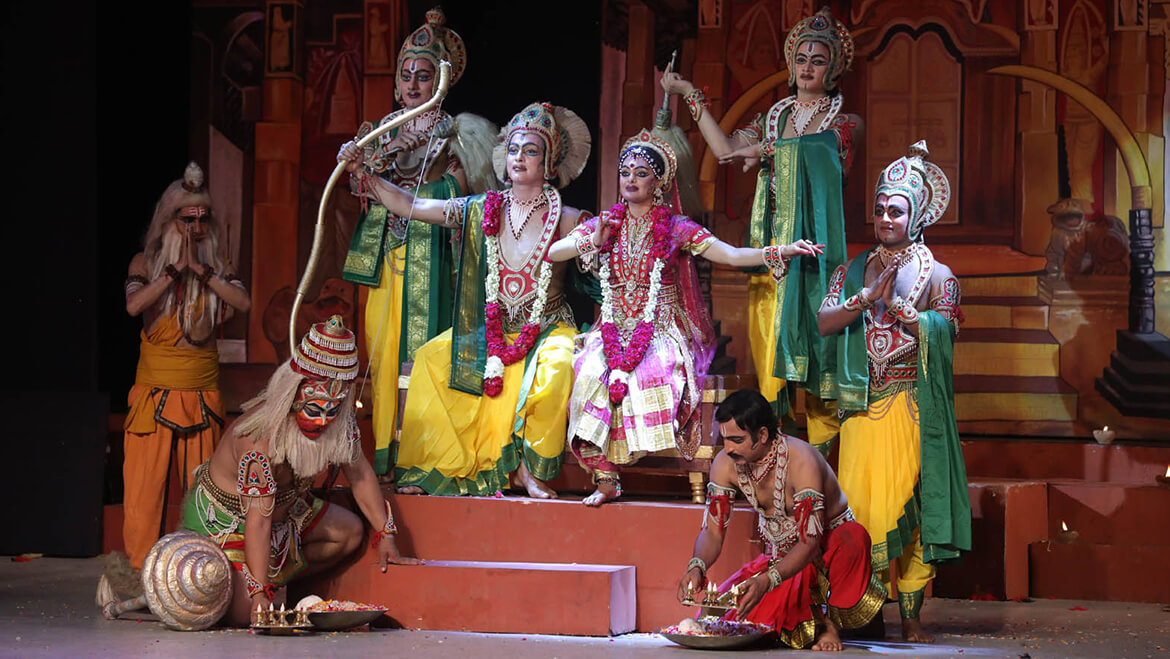
There exist many oral accounts suggesting that the tradition started in Varanasi and is usually associated with Tulsidas or Megha Bhagat. It is also generally accepted that the oldest Ramleelas were performed in Varanasi-Ramnagar. However, the earliest documentation of the performances comes only from the early 19th century. There are also reports suggesting similarly old Ramlila traditions at places like Ayodhya, Prayagraj (Allahabad), and Old Delhi, but evidence for these practices is not very reliable.
Lothspeich divides the tradition into 3 phases. The first phase lasted from c.1820 to 1890, when many traditional performances began to emerge. They were influenced by the Ramnagar Ramlila, but had their distinctive features. The next phase came in c.1935 to 1970, when new Ramlilas were created. These were more focused on realistic acting and were often performed on outdoor stages. The last phase was from the 1990s to 2000s, when TV shows like Ramanand Sagar’s Ramayan and other series led to a renewed interest, and through a new digital medium of entertainment.
ORIGIN OF RAMLILA IN DELHI:
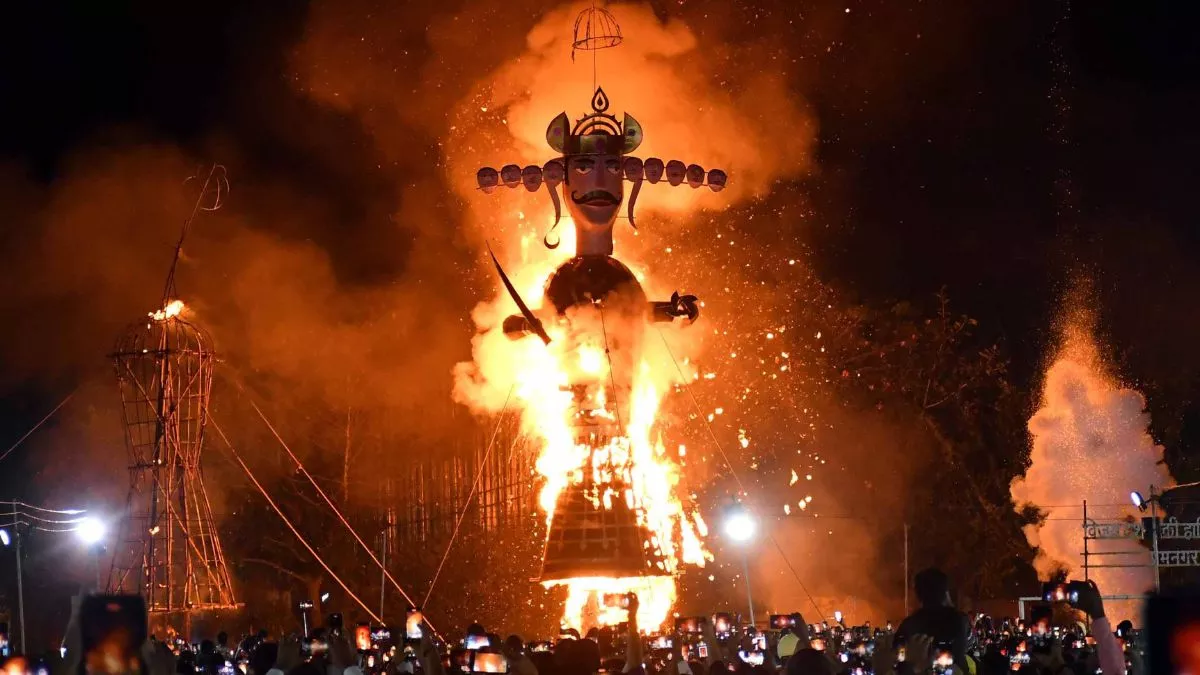
The practice of Ramlilas in Delhi might have begun during the reign of Shah Jahan, for the Hindu soldiers in the Mughal army. By the reign of Emperor Bahadur Shah Zafar, the tradition had developed many characteristic features. The Bazm-e-Akhir, written by Munshi Faizuddin, lists several rituals that were observed in the fort to commemorate Dussehra. One such tradition was that a Neelkantha bird was released from the top of the Red Fort on the morning of Dussehra. Festivals like Dussehra, Diwali, and Eid all enjoyed equal patronage.

According to Rana Safvi, other traditions were followed as well. The burning of large effigies of Ravana came into practice during this time. Red Sharabat (a drink) was distributed to everyone in Kulhads (clay cups). This drink symbolised the blood of Ravana. On the day of Dussehra, the emperor would reward people in his court. Ramlila was performed at the Yamuna banks behind Lal Quila, and the performance was enjoyed by both the Royal family and the inhabitants of the city. Verses of the performances were written in Persian and Urdu, since Persian was the language of the court, and hence widely understood.
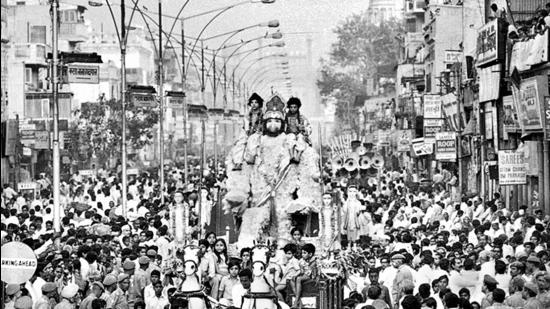
Another tradition, which was started under Bahadur Shah Zafar and continues to be practiced after around 180 years, is that of Ramleela Savari. Ramleela Savaris were processions in which performers would dress up as Lord Rama, Sita, Lakshman, and Ravana and other important characters, and travel within the city, visiting important temples, and passing through important streets and neighbourhoods. The procession consisted of various Jhakis (tableau), depicting different scenes from the epic. It would begin in the afternoon and reach the performance ground by evening. During the part of the performance when Rama’s exile was to be enacted, Rama, Sita, and Lakshman would sit on a boat and were ferried across Shahji ka Taalab (a pond, which was later filled up).
EVOLUTION OF RAMLILA IN DELHI POST- 1857:
After the Revolt of 1857, the British took control of the city. They monitored the route of the procession and inhibited the passing of the procession through the fort. When the British shifted their capital to New Delhi, the old venue of Ramlila (behind the Red Fort) was also changed to what is now known as the Ramlila Maidan. Till the 1930s, this area was a large pond, which was filled up later on to create the Ramlila Maidan. This ground is situated between Old and New Delhi, extending from Aruna Asaf Ali Marg to Jawaharlal Nehru Road.

After the Mughals, the Ramlila committees were funded by the donations made by big industrialists. Up until the 1920s, the tradition of Ramlila survived due to the joint efforts of the mahants and the merchant-patrons. In the year 1923, the first-ever Ramlila Committee, ‘Sri Ramlila Committee’, was created. Its members belonged to different communities and faiths. However, due to some differences, a split occurred in the committee, leading to the formation of the Sri Dharmic Lila Committee. Currently, this group performs at Subhash Maidaan. Another Ramlila is organised by the workers of the Delhi Cloth Mill (DCM), which became popular due to its revolving stage, as well as for being the first Ramlila to feature a flying Hanuman.

RAMLILA TODAY:
The tradition of Ramlila is not just limited to Delhi or other older cities of India, but has also gained popularity in other countries like Trinidad, Fiji, and Mauritius. The actors deck themselves in exaggerated jewellery, makeup, headgears, costumes, etc., and carry out the performances for days leading up to the festival of Dussehra. These performances are supplemented by carefully written scripts and dialogues, as well as popular and folk music. The performers belong to different faiths. In addition to the performances at Ramlila Maidan and other sites of significance, Ramlila is also performed in other places that are sometimes community or locally organized.
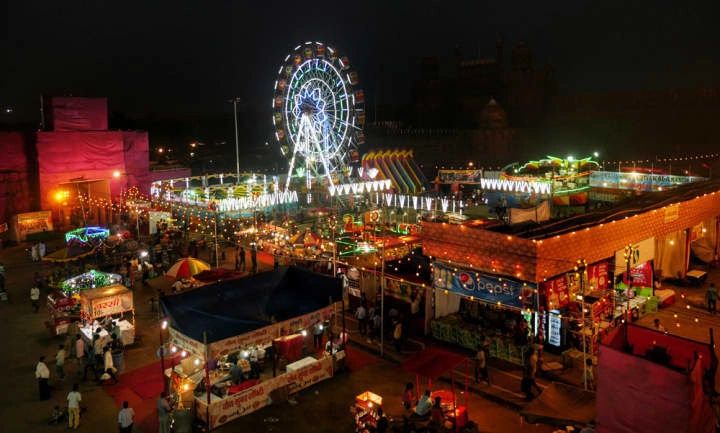
The use of modern technology has also increased to make the viewer’s experience more convenient. Some organizations like Shriram Bhartiya Kala Kendra translate their Ramlilas into English and project them on large screens, making the performance accessible to a larger audience. The Lavkush Ramlila Committee, together with the TV Channel Saadhana, broadcast a live telecast of its Ramlila.
Other organisers use huge screens to make the performance visible to their crowd. Popular media (like Bollywood songs) is also used and referenced by some to make the performances more enjoyable. The Ramlila season has extended beyond an episodic theatrical performance, and includes other elements such as food stalls, fairs, amusement parks, and other attractions; thus beginning to characterize a cultural & entertainment event.
However, the Ramlila Savari is becoming less popular. The procession lacked sufficient funds, and Jhakis were gradually removed from it. The route of the Savari also had to be modified due to redevelopment in these areas. Moreover, there seems to be a decline in interest in its audience. Despite these hurdles, Ramlila Savari continues as a tradition, even after more than 180 years since its inception.
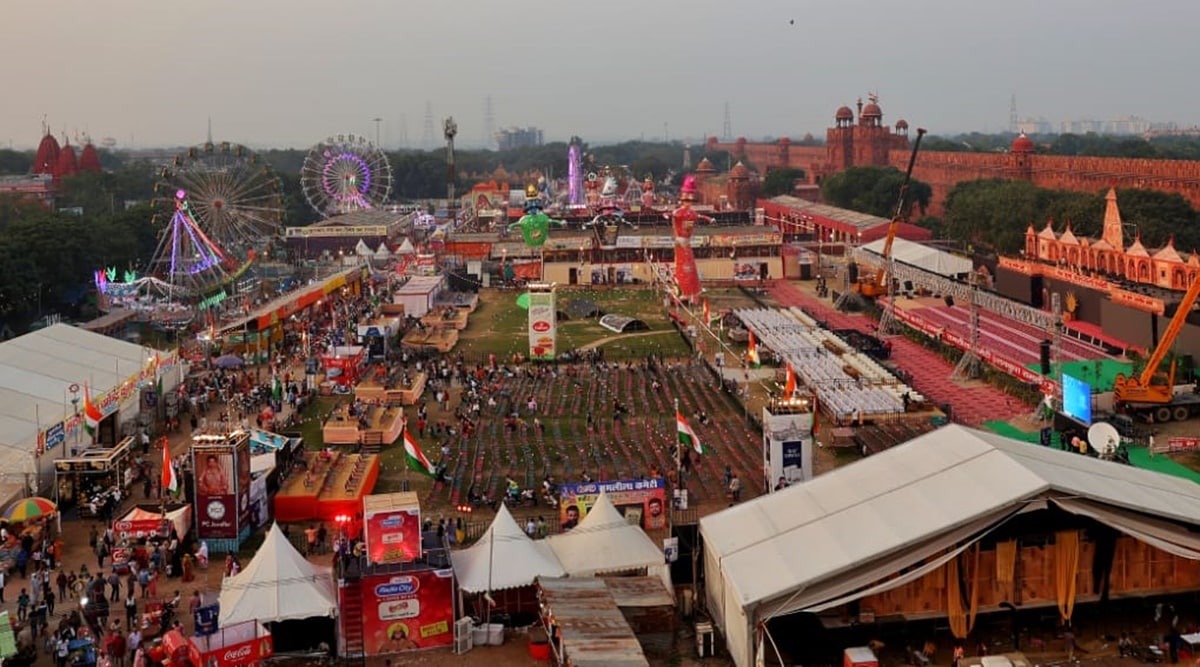
CONCLUSION:
Ramlila is not just a theatrical performance, but holds great devotional and cultural significance. In 2008 (originally proclaimed in 2005), UNESCO recognized Ramlila as part of the Intangible Cultural Heritage of Humanity. While Ramlilas are still an outdoor event, the Ramayana has been adapted into several TV series as well as movies. Despite the declining interest in Ramlila Savari, the tradition of Ramlila in Delhi is still as cherished as it was before. It is a tradition adored by people of all backgrounds. From grand productions, huge indoor or outdoor stages to very local neighbourhood productions in streets and fields, Ramlila is essential to the Navaratri-Dussehra experience of Delhi.
REFERENCES:
- Lothspeich, Pamela. “Introduction: The Field of Ramlila.” Asian Theatre Journal, Volume 37, Number 1, Spring 2020, pp. 3-33, n.d.
- https://ich.unesco.org/en/RL/ramlila-the-traditional-performance-of-the-ramayana-00110
- https://www.hindustantimes.com/delhi-news/mughals-to-machines-how-ramlila-lived-through-ages-in-delhi-s-streets-and-royal-courts/story-nU53QoKvBXq4TbxCPW84VK.html?
- https://enrouteindianhistory.com/ramlila-savari-old-delhis-historical-procession/?
- https://caravanmagazine.in/perspectives/real-demon?
- https://anandfoundation.com/the-drama-around-rama-ramlila-delhi/
- https://www.thestatesman.com/features/yesteryear-ramlila-durga-puja-delhi-1502500893.html?
- https://curlytales.com/then-and-now-a-tale-of-tradition-transformation-and-timelessness-at-delhis-ramlila-maidan/?
- https://www.shriramlilacommittee.in/about.php
- https://indiablog.in/ramlila
- https://thepatriot.in/culture/the-cultural-mosaic-of-dussehra-in-old-delhi-59260
- https://ranasafvi.com/dussehra-festivities-in-shahjahanbad-2/
- https://www.sondeepshankar.com/ramlila-procession-through-old-delhi
- https://www.timesnownews.com/lifestyle/people/delhis-oldest-ramlila-a-tradition-rooted-in-mughal-emperor-bahadur-shah-zafars-era-nearly-two-centuries-ago-article-113845556




